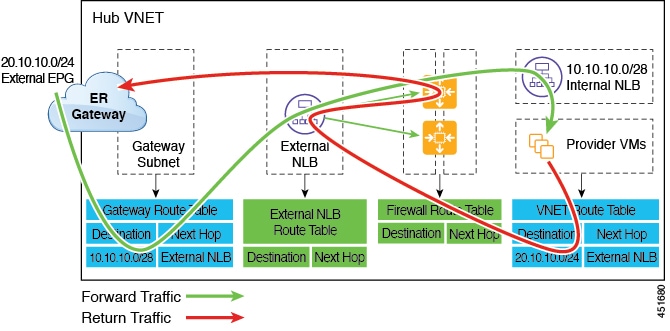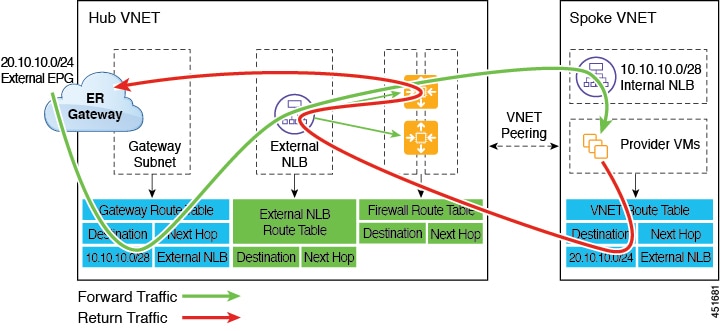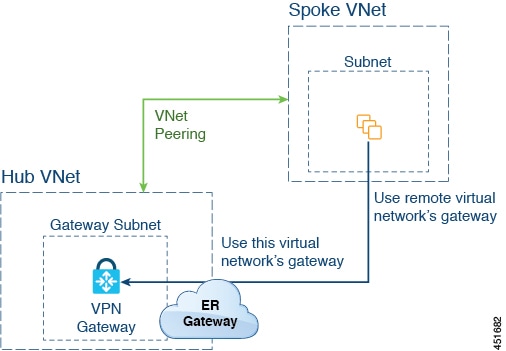About Express Route Gateway
Beginning with Release 5.1(2), support is now available for express route gateway deployment, where you can deploy an express route gateway in the hub VNet using redirect or without using redirect. The express route gateway is used to provide connectivity between a Cloud APIC-managed cloud site and a non-ACI remote site. The external EPG for the non-ACI remote site (in this case, connected by an express route gateway) has a contract with the cloud EPG in the hub or spoke VNet.
 Note |
This chapter focuses on express route gateway deployment for connectivity between a Cloud APIC-managed cloud site and non-ACI remote site, which doesn’t involve Cloud APIC managed cloud routers (CSRs) in the path. For a Cloud APIC-managed cloud site and an on-premises ACI remote site, express route gateway can be used as an underlay network between sites, which is not managed by Cloud APIC. |



 Feedback
Feedback